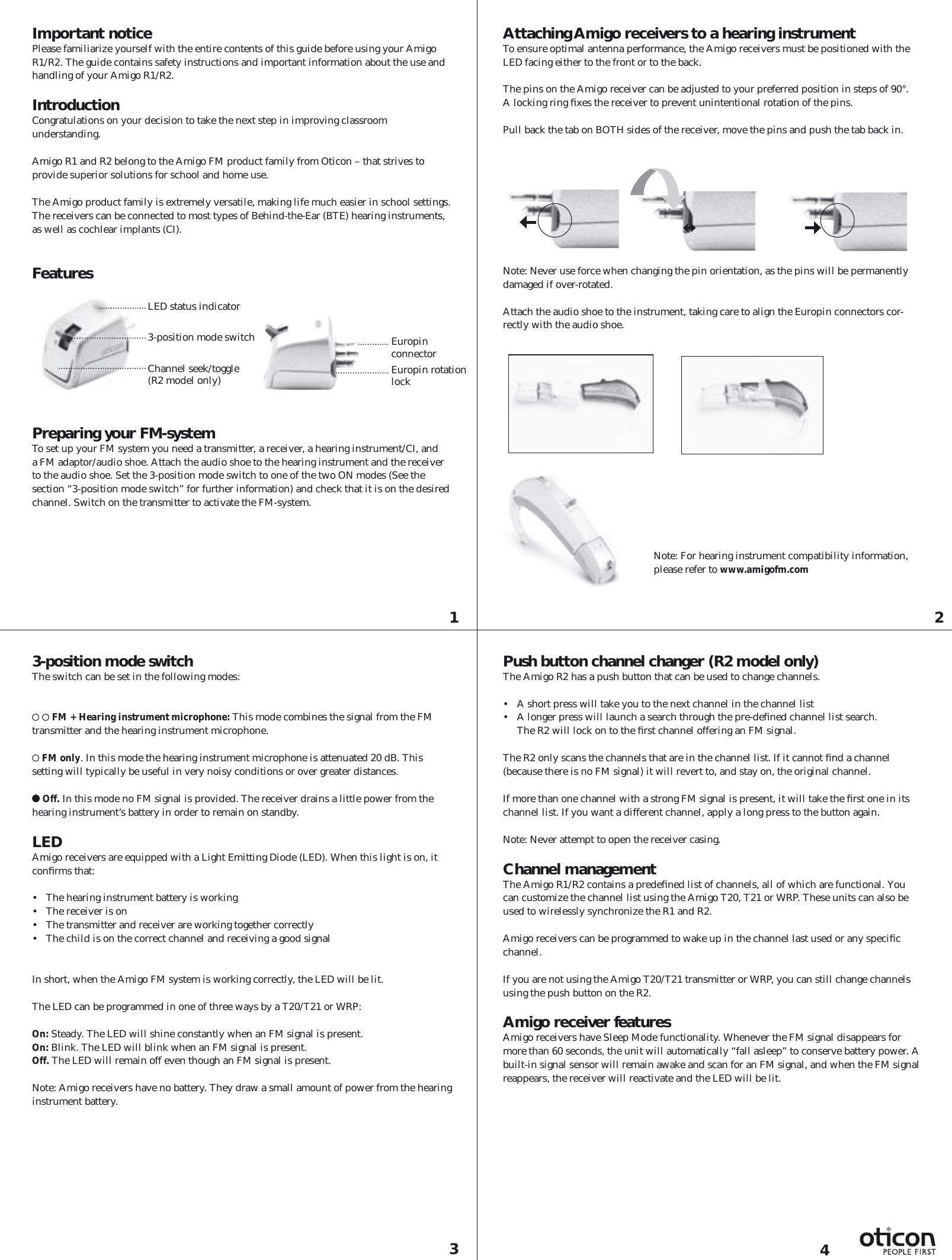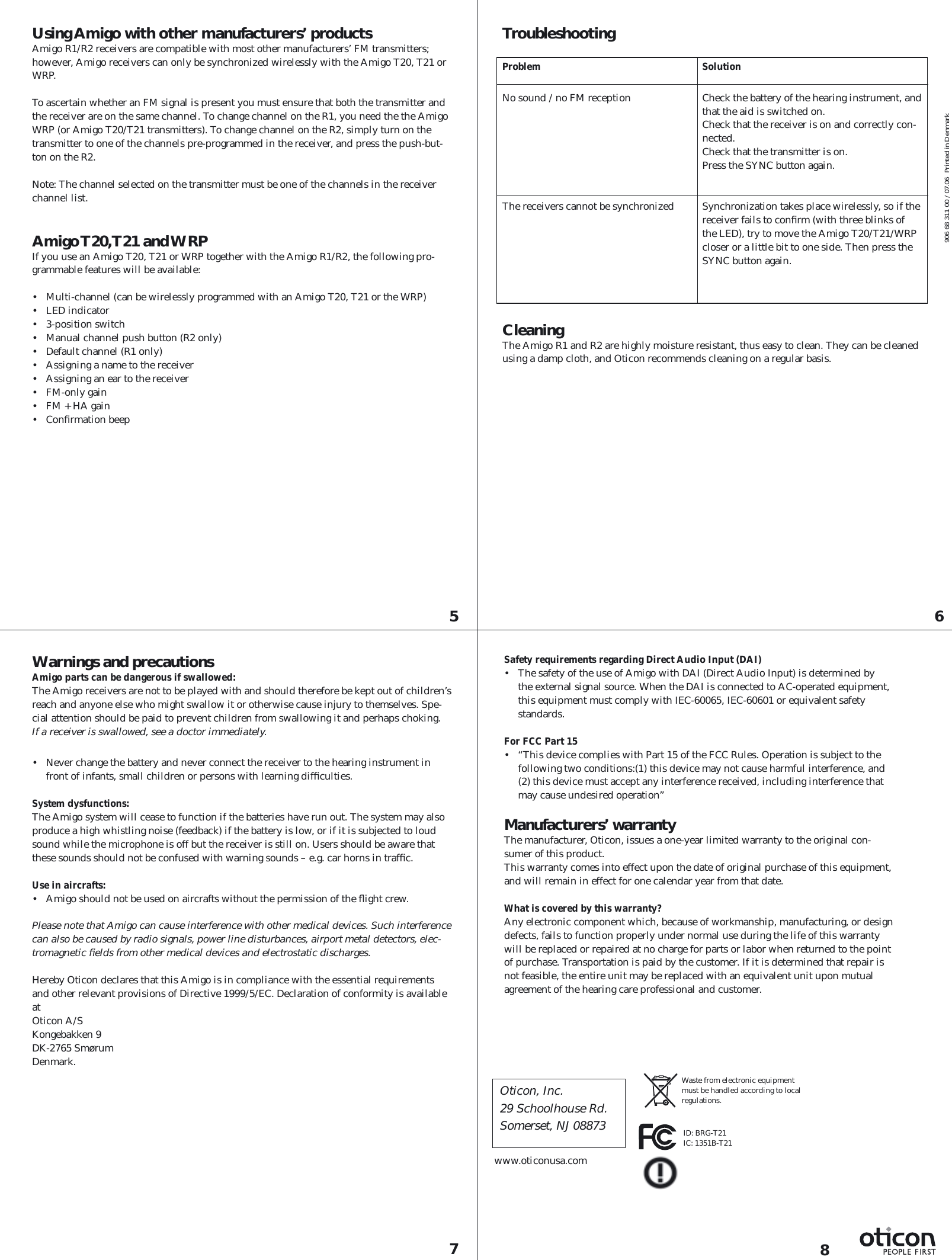Phonic Ear T21 Wireless Accessory for Hearing Aid User Manual
Phonic Ear, Inc. Wireless Accessory for Hearing Aid
Contents
- 1. 08 User manual 1
- 2. 08 User manual 2
- 3. 08 User Manual receivers
- 4. 08 user manual 1
- 5. 08 user manual 2
08 User Manual receivers

